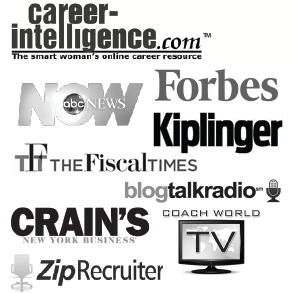
May 25, 2016 | leadership, networking, women
I make it a point to read the Workologist column in the Sunday New York Times Business Section whenever it appears, not because of the “sage” advice offered… but actually despite it! The responses to real world topics of tremendous and timely significance often lack not only a true understanding of climate, culture and social norms of the workplace but also the context essential to dispense sound, actionable and most importantly, responsible advice. The NYT has taken note of my thinking and published responses both in the paper and on the website but pushback isn’t always published so the Workologist’s advice goes largely unchecked. This is why I’ll be publishing my thoughts on mass market advice here… where the focus is on real work and real results… in real time. As an executive coach focused on professional firms similar to the one mentioned in the article, I’ve learned to embrace (and never ignore) the complexities, nuances and culture inherent in each different organization. However, in an article about ‘mandatory’ fun at work, the Workologist offered a prescriptive solution without fully considering the profound implications of the situation or more importantly of his naive and fairly tone deaf advice … Here’s my — until now — unpublished response: In suggesting a strategy to push back against the questionable merits of “mandatory fun,” I feel that providing any practical, effective solution warrants gathering more information. We know that the company in question is a financial firm but we don’t know its size or whether it’s privately or publicly held, distinctions that can absolutely affect the eventual remedy. For the sake of argument, I...

Dec 3, 2015 | leadership, Uncategorized
While being ahead of the curve can be a lonely place (so many are content to tolerate the status quo, even when it’s clearly stale) I’m used to it! My thinking, my perspective and my proprietary programs can be disruptive, challenging prevailing assumptions and up-ending convention. But happily, with time, some early adopters — those rare evolved leaders who understand that success involves both innovation and a resistance to conformity —catch on and help normalize the new. This is an exact sweet spot for dtkResources, as it’s here where we can create change and generate impact. x Take, for example, the ritual of annual performance reviews which are universally loathed (by the rater and the recipient!) and often feared. The current wisdom finally understands the negative impact and collateral damage this process can cause. And so, there’s (again – finally!), a movement afoot started by a growing number of Fortune 500’s to ditch the process, especially the part that has to do with numerical rankings. In contrast, affection is growing for the more qualitative aspects of the formal review but as long as the review remains ‘formal’ and annual (or even semi-annual), its impact and value will always be limited. x Over two years ago, when I first unveiled my answer to this huge problem with my proprietary “Dynamic Intel,” firms were still invested in the formal, quantitative review process. 360s were also on the scene but were most often deployed on a one-off basis and in response to a particular disconnect or dysfunction. It’s hard to uproot the status quo and at the time, Dynamic...

Jun 7, 2015 | critical thinking, gender roles in business, leadership, personal development, women
So far in this article series, we’ve discussed: why the current efforts thrown at increasing the number of women leaders aren’t working the three problems women professionals encounter when moving up the ladder how women can better make themselves heard Now, it’s time to create a real world solution so women (professional women) will not just be heard but heeded in the boardroom heeded in the boardroom. The not-so-obvious solution: building a powerful sphere of influence. Don’t reduce this article to something that is simply about “networking.” Building a sphere of influence is not the same thing as garden-variety networking at all. Largely indiscriminate, typical networking encourages us to cast our net a mile wide but an inch deep. When we do that, we don’t get the prime catch, we get other random stuff in the mix— smaller fish, a boot, used tires, etc. There’s nothing random about building a professional sphere. Building a professional sphere is serious and deliberate work that has as its objective fewer but deeper relationships which you continue to nourish and cultivate throughout your career. It is never too early to start this lifelong career strategy. Start with where you are by answering this question: If I were to be most deliberate in building a professional sphere, which 2 people would I begin to pursue and which 2 people will I stop pursuing or investing...

May 7, 2015 | confidence, gender roles in business, leadership, personal development, women
Women need to be respected at work. The most direct path to generating such respect, while rarely discussed, is all about creating a compelling personal brand. What’s the connection? Both put a premium on trust and consistency. Aside from your ability to communicate effectively, deliberately creating a brand that emanates from your core values will yield the sharpest tool in your toolbox. Become a truly effective communicator, and people may listen. You will be heard. But, to inspire people to follow, perform for and invest in you, you’ll need their respect. A professional’s brand is her word. So, what IS your professional brand? Have you given this any thought? If not, here’s a great place to start: Understand that a great brand stems from core values. Make a list of your most fundamental values and beliefs. These should be values that without which, you wouldn’t be who you are. They need to be rock solid, with all else stemming from there. Next, list your competencies, those for which you want to be known. Finally, create your own visual, your own schematic of what your brand looks like. As an example, I think of mine as a golf ball that encases… a hard super ball center but then has all those rubber band things wrapping around and around it. But that’s mine. What’s yours? Grab an accountability partner and do this exercise. It will change the way you show up at work. So far in this article series, we’ve discussed: why the current efforts thrown at increasing the number of women leaders aren’t working the three problems women professionals encounter when...

Apr 16, 2015 | critical thinking, gender roles in business, leadership, women
The core take-aways covered in my “Picking Up” program are designed to provide structured foundational skills to exactly track along the lines of the problems women face when moving up the ladder. The first problem is that women feel they’re not heard. The solution? An age-old, somewhat tired term with often over-simplified explanations: Effective Communication. Before you yawn and say you’ve heard this before, I promise you’ve never heard it this way. While others bemoan how things should be, I’m in the reality business. I start from the point of where things are, no matter how inconvenient, uncomfortable or unpopular. And the current reality is that the language of business is male. We don’t have to like it. But we do have to use it as our point of departure. This is important to accept because men and women have very different communication styles — our brains are wired differently. In my work, I help women become better able to decode the differences. Only then, will they be able to leverage the different styles for competitive advantage. You can probably bet your bottom dollar that men aren’t trying as hard to understand the language of women. And in fact, men often find our style — our mode — uncomfortable, inscrutable and basically just too probing. There, of course, lies the rub. Especially when 83% of those “at the helm” — making advancement decisions — are men. So, women professionals, here’s my challenge: Make it your mission to become aware of verbal and non-verbal communications. Study the really profound differences in how men and women communicate. And then, create a plan...

Mar 23, 2015 | critical thinking, gender roles in business, leadership, personal development, women
For more than a decade, my consulting firm has worked with organizations and individuals to identify the gaps, see the patterns and challenge the assumptions that are keeping them from optimal performance and profit. I work with leaders, and there are times I have to point out the obvious: Their emperor has no clothes. The women’s professional development space is no different. Gaps, patterns, assumptions… and lots of “solutions” parading around with no clothes. But let’s start with the positive: The women’s professional development space has enjoyed overwhelming research proving that “women are good for business” and near constant media attention. The benefit of having women on boards is now widely accepted as truth. Numerous solutions have been thrown at the problem of having too few women at the top. And what a stubborn problem it is. Ten years ago, when I personally began tracking this number, the percentage of women in high level leadership positions was at a paltry 17%. Would you like to guess what that number is today? Ten years, numerous books, well-meaning corporate initiatives and countless media interviews later? 17%. That’s across industries and across the board. We’re talking law, accounting, financial services, government, even at one time, the NBA! Despite these various (and frequent) attempts to get women to: follow the leader… find a mentor… be a mentor … get a sponsor… lean in… lean back.. jump up… turnaround and…well, you fill in the blank, the real data for women in leadership remains unchanged. This emperor — flattered by tv talk shows, heralded in the news, and making appearances at fancy banquets — has...







 Dani Ticktin Koplik —
Leadership consultant, executive coach, change agent and passionate professional development expert and speaker. You can learn more about Dani and her clients by visiting dtkBio page.
Dani Ticktin Koplik —
Leadership consultant, executive coach, change agent and passionate professional development expert and speaker. You can learn more about Dani and her clients by visiting dtkBio page. 